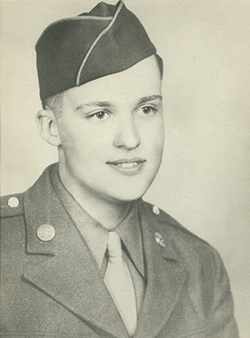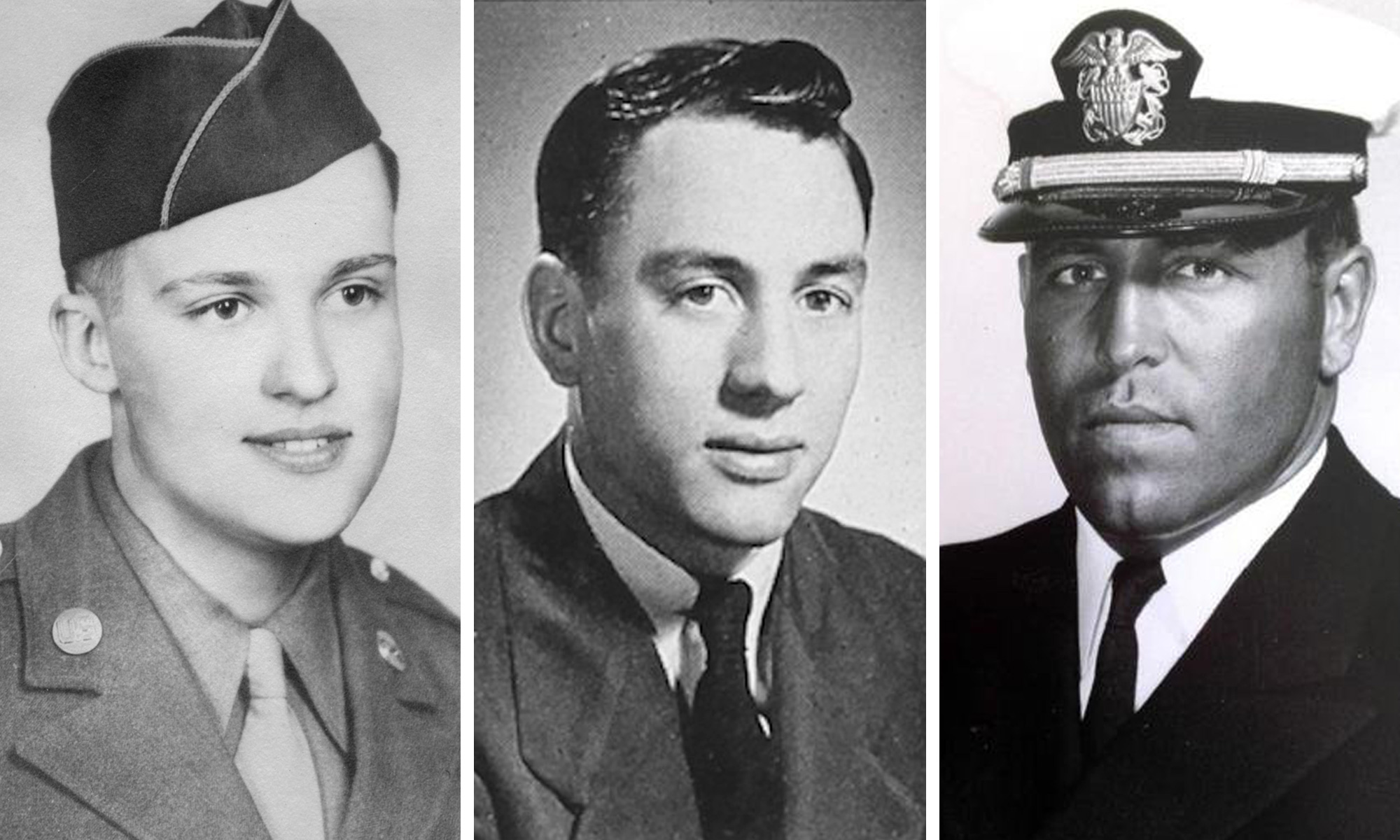Profiles of University alumni who gave their lives for their country.
Members of the University of Rochester community have given their lives in service to America almost since the University was founded in 1850.
They’re commemorated across the River Campus. A series of plaques affixed to a wall in Hirst Lounge, Wilson Commons, lists the names of fallen students and alumni since the Civil War. The Veteran Memorial Grove, located near the stairs leading up to Wilson Quadrangle, honors University alumni killed in wartime since World War I. And in the University’s NROTC offices in Morey Hall, there’s the Victor Ohanesian Midshipmen Training Room and Thomas King ’66 Wardroom. Ohanesian was an assistant professor of naval science, and King was a student-athlete and NROTC battalion commander. Both lost their lives in Vietnam.
“Memorial Day is a unique American holiday where we honor our fallen service members,” says Nathan York, a captain in the US Navy and commanding officer of the University’s NROTC unit. “Throughout our history, there are many examples of courage, service, and sacrifice for us to reflect on. As we think about the impact of their service, I’m reminded of the words of Winston Churchill: ‘Never in the field of human conflict was so much owed by so many to so few.’
“I hope that as we celebrate Memorial Day, we use this opportunity to honor the lives of all those that have contributed to making our nation what it is today.”
In recognition of Memorial Day, here are stories of three University students and alumni who died while serving in the armed forces.

Bjorn Lindboe ’45
World War II
Bjorn Lindboe grew up in Rochester and married Anita Sheldon in 1942, a year after they graduated from East High. He entered the University, joined Delta Kappa Epsilon, took a job with a banking company and became a father at 18 with the birth of daughter Karen. In September 1943, he was called to active service and trained at Camp Croft in Spartanburg, South Carolina, before being sent to England the following April. Just three months later, on July 7, 1944, Private Lindboe was killed in action near Forêt de Mont-Castre, a forest in Normandy, France. He was 19.
It would be four years before his body was returned to the United States, part of a six-year recovery effort that brought home the remains of nearly 300,000 soldiers overseas. Lindboe was laid to rest in Portland, Maine, a few miles from where his parents had moved after his death. Anita, his young widow, remarried and had four more children. She died at age 85 in 2009—65 years after the death of her high school sweetheart.
The 1945 Interpres yearbook noted that the senior class had entered the University in September 1941, just three months before the attack on Pearl Harbor sent the United States into war. “When we started the men’s section in the Interpres, we had 60 ’45 men,” yearbook editor Hyman Goldberg ’45 noted. “Now, we have 40 left on the campus and in July there will be 10.”
Goldberg said he was confident the University students scattered across the globe were doing their part in bringing peace to the world. “Until we meet again in our first post-war reunion, may it be soon,” Goldberg said. “Lots of luck fellows.”

Lester Shade ’47
Korean War
A native of Union City, Pennsylvania, Lester Shade was a student and football player at Bucknell University in the mid-1940s before transferring to Rochester, where he majored in mechanical engineering. He served in the NROTC units at both schools and received his commission as an ensign in June 1947 after graduating from Rochester.
Shade completed basic training in Pensacola, Florida, and advanced training in Corpus Christi, Texas, before returning to Pensacola in 1949 for carrier qualification in combat type aircraft.
On June 27, 1950, President Harry Truman ordered US air and naval forces to South Korea. Less than five months later, on November 7, Lieutenant Shade was killed when his Grumman F8F Bearcat, a single-engine fighter aircraft, crashed into the Gulf of Mexico during a training flight in Pensacola. It was Shade’s last flight from the USS Wright before he was to receive his wings.

Gary Hopps ’61
Vietnam War
A football, basketball, and baseball star at Brighton High in Rochester, Gary Hopps had dreamed of joining the Navy from an early age. “My chief desire is to go to Annapolis,” he told the Rochester Democrat and Chronicle in a 1953 article his senior year. “Until I’m sure I can’t go there, I won’t make up my mind on any college.”
After entering a Naval preparatory school in Silver Spring, Maryland, he become a star football player at Denison University in Granville, Ohio, before landing at Rochester. After college, he joined the Navy, became a commissioned officer, and spent the final four years of his life as a Navy pilot.
On February 10, 1966, Lieutenant Hopps was attacking a road bridge over North Vietnam from his single-seat Douglas Skyraider when he was shot down by enemy groundfire. His body was never found, and years after that fateful day, his status was changed from POW/MIA to Killed in Action.
Friends and classmates pointed to a poem from the 1954 Brighton yearbook that seemed sadly prophetic:
“You to the left and I to the right,
For the ways of man must sever.
And it well may be for a day and a night.
And it well may be forever.”
 (University of Rochester illustration / Michael Osadciw)
(University of Rochester illustration / Michael Osadciw)We remember
Find more profiles of University community members who lost their lives serving in the armed forces.





